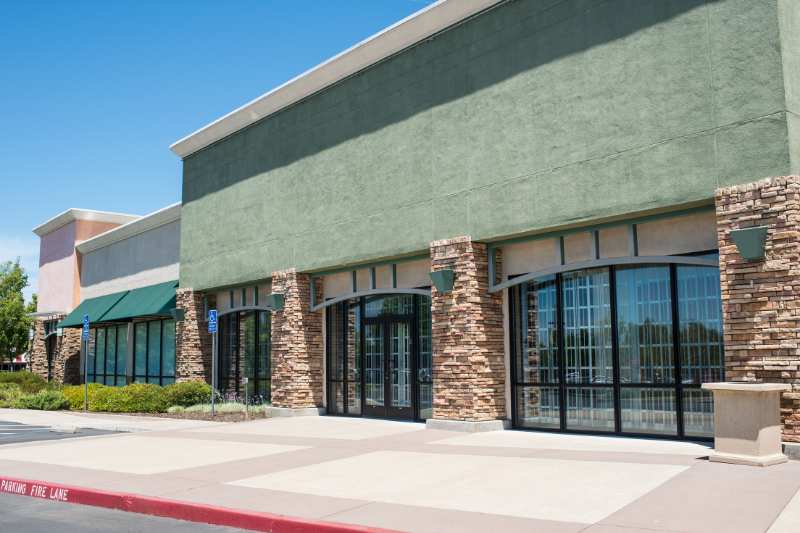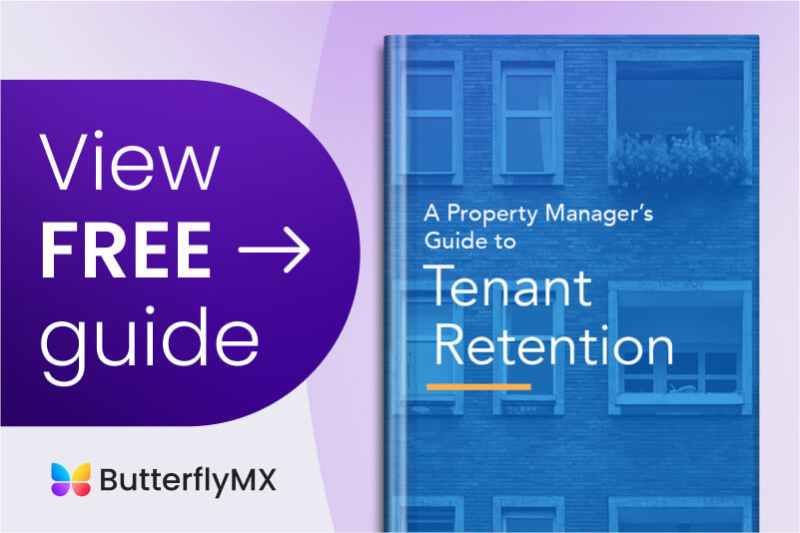Key takeaways
- A percentage lease sees a commercial tenant pay a base rent plus a percentage of sales in a month.
- When calculating rent, use this formula: percentage rent = fixed base rent + % of sales over the break-even point.
- When negotiating, tenants want a low base rent and a high break-even point, whereas landlords want a high base rent and a low break-even point.

Landlords and tenants have several options when negotiating their lease terms. A percentage lease is one of the main types of financing commercial real estate leases.
Below, you’ll find out what a percentage lease is and an example of how it works. Additionally, you’ll learn the advantages and disadvantages of this type of lease and how to negotiate terms as a tenant or landlord.
This post covers:
- What is a percentage lease?
- What is an example of a percentage lease?
- Pros and cons of a percentage lease
- Negotiating a percentage lease agreement
What is a percentage lease?
A percentage lease is a type of commercial lease where the tenant pays a percentage of revenue in addition to an agreed-upon base rent.
Typically, the base rent is lower because the tenant pays a percentage of their sales paid to the landlord. As for the percentage of revenue paid, a break-even point must be agreed upon. Then, a percentage of sales beyond the break-even point will be paid to the landlord.
Furthermore, tenants are not usually responsible for the cost of insurance, maintenance, property taxes, and other additional fees in the terms of a percentage lease.
What is the difference between a percentage lease, a net lease, and a gross lease?
The difference between a percentage lease, a net lease, and a gross lease are the types of expenses the tenant must pay.
See how these commercial leases compare:
Who uses a percentage lease?
Percentage leases are most often used with retail tenants. Multi-tenant retail properties, such as malls and shopping centers, use this type of lease because it benefits both parties involved.
Who benefits most from a percentage lease?
Percentage leases are designed to benefit both the tenant and landlord.
This lease allows landlords to hand-select businesses they want in their multi-tenant property. The goal is to choose businesses that synergize, enticing customers to stay and visit multiple stores.
As a result, tenants receive more customers and revenue, which is then passed on to the landlord through a variable rate.
Learn how to get started in commercial real estate development:
What is an example of a percentage lease?
So, you know what a percentage lease is, but how do they work?
Let’s look at an example:
A tenant leases a 1,000-square-foot unit and pays $3 per square foot per month in fixed base rent. So, their base rent adds up to $3,000. The tenant and landlord agreed on a break-even point of $25,000 and a 5% variable rent. This means the tenant will pay the landlord 5% of all sales that surpass $25,000.
To simplify this process, use the percentage lease formula to calculate expenses:
Percentage lease = fixed base rent + % of sales over the break-even point
With that said, let’s take a closer look at the example:
- Suppose that, in one month, the tenant makes $22,450 in revenue. So, the tenant only pays the $3,000 in fixed base rent because they did not exceed the $25,000 break-even point.
- However, the following month, the tenant generates $30,000 in sales. So, the tenant pays the fixed-based rent of $3,000 and 5% of the $5,000 over the break-even point, which is $250. As a result, the total rent the tenant pays is $3,250.
Pros & cons of percentage leases
Like other lease options, percentage leases have their pros and cons for affected parties. Thus, tenants and landlords should determine what is right for them by closely analyzing how this type of lease will impact their investment.
What are the advantages of percentage rent?
Benefits for tenants:
- Lower base rent. A lower fixed rate for rent is beneficial for tenants despite it being bolstered by a variable rate. With that said, if the break-even point isn’t met, tenants only pay the fixed rate.
- Landlord’s interest. In instances where other leases are used, landlords often don’t care about the success of tenants’ businesses. However, a percentage lease makes the landlord invested in their success, which often leads to a better overall tenant experience.
- Upkeep and maintenance. Since landlords are invested in the success of their tenants’ businesses, they’re more likely to stay on top of maintenance and landscaping to attract customers to the property.
Benefits for landlords:
- Higher gross revenue. Landlords benefit when their tenants are successful, therefore earning more money in gross revenue than possible with a standard lease.
What are the disadvantages of percentage rent?
Disadvantages for tenants:
- Lost sales revenue. The most obvious disadvantage for tenants is losing a percentage of revenue after the break-even point. Because of this, tenants may feel like they can’t maximize the benefits of their revenue.
- Reporting. Tenants are required to accurately report monthly sales to landlords under this type of commercial lease agreement.
Disadvantages for landlords:
- Lower base rent. With a percentage lease comes a lower base rent. This may not always be boosted by a variable rate if the break-even point is not exceeded.
- Reporting. Similar to tenants, landlords must review all of the sales reports provided to them to accurately calculate the variable rate for each tenant.

Negotiating a percentage lease agreement
A percentage lease allows for plenty of negotiating so that both parties can come to a mutual agreement. Nonetheless, tenants and landlords often have different goals in mind when negotiating the lease agreement.
Tenants
As a tenant, your objective is a low base rent and a high break-even point. Unfortunately, obtaining both of these is unlikely. So, it’s best to aim for a higher break-even point. That way, you can earn more in sales before the variable rate takes effect.
Additionally, tenants should negotiate what revenue streams or types of sales fall under the contribution to the lease. For example, you may not want the sales from employees’ purchases or returned items included in the lease terms, as they don’t accurately represent sales.
Landlords
Meanwhile, as a landlord, you want a higher base rent and a lower break-even point. A higher base rent allows you to obtain financial stability, reducing real estate risk. Simultaneously, you want a lower break-even point to generate more monthly income.
Negotiating the terms and procedures for conducting sales reporting is also especially important. You’ll want to ensure you’re given accurate sales reports from tenants to properly calculate monthly rates.







